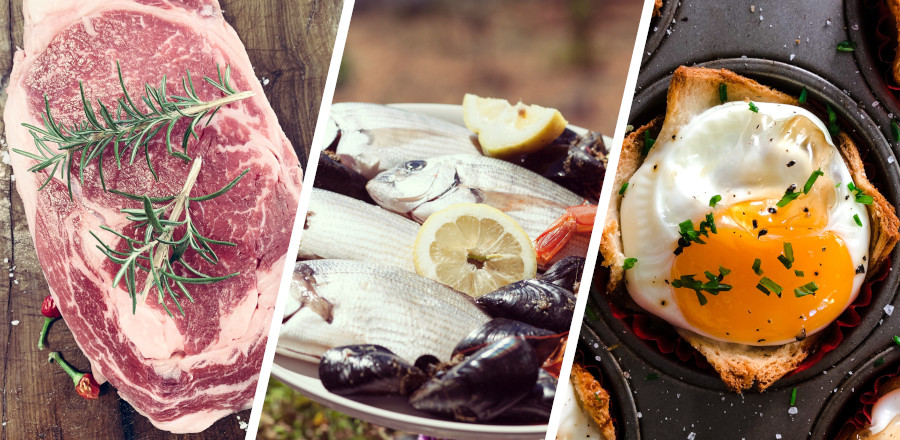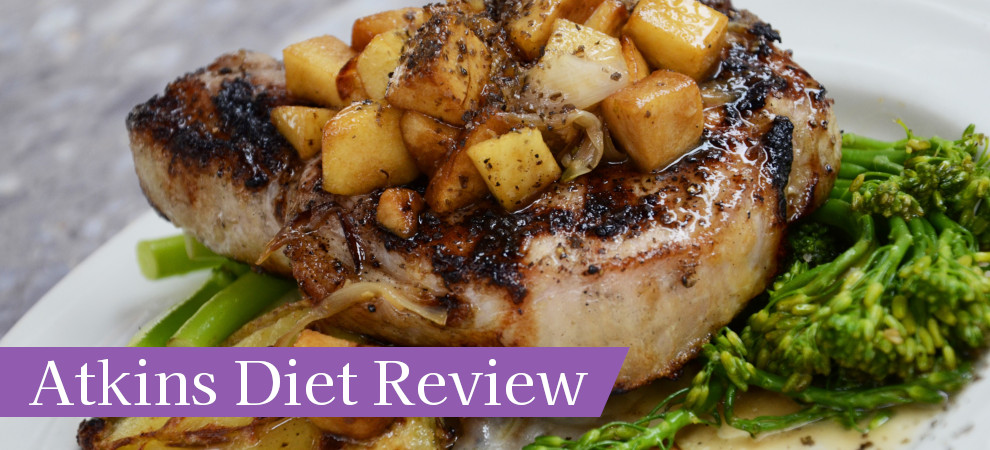If there’s one diet that seems so complex, yet really isn’t, it’s the Atkins diet. It’s been floating around in the health and nutrition world for over four decades and criticized for quite some time of that.
As a predominantly weight loss focused diet, Dr Robert Atkins wrote his initial book on the matter in 1972. Since then, it’s been both praised and slated, but there’s no avoiding the facts – the Atkins diet is great for weight loss.
It’s even been revealed as a great nutrition course to follow for things like improving blood sugar and cholesterol levels.
The diet follows low carbohydrate, high fat and protein principles. It’s this very form that started the media frenzy for its unhealthy label. But, considering that it’s naturally a diet quite low in calories, despite not being a calorie counting diet, it’s tough to class it as unhealthy.
Table of Contents
How It Works

If you’re looking to really stick to the Atkins diet in its original form and not just follow a low carb, high fats and protein diet, you’ll need to know all about the phases. Dr Atkins has split the diet into four initial phases that introduce the diet into your lifestyle.
The four phases are as follows:
- Induction: This kick starts the weight loss. For two weeks, carbs should be kept to under 20 grams each day by eating high fat and high protein foods with low carb vegetables like leafy greens.
- Balancing: Now, things like nuts, small amounts of fruit and low-carb vegetables can be added into the high fat and protein foods.
- Fine-Tuning: For weight loss, when your goal weight is close, add in smaller amounts of carbs until the weight loss slows.
- Maintenance: Now that the weight has been lost, as many healthy carbs as you need can be added to the diet, as long as your body is not regaining weight.
Not everyone enjoys sticking to the induction phase, some people don’t even follow the guidelines, but just stick to a low or zero carb diet, however this is the basic format set out by Dr Atkins with his initial diet plan.
Some people prefer to stick to the foods that they are advised they can and cannot eat on the Atkins diet and go from there. However, for maximum weight loss, the phases are definitely always recommended and can be completely customized to suit your own weight loss goals.
The Foods
This is the part that most people want to know more about right away. There are strict guidelines of what foods are classed as acceptable on the Atkins diet and those that should be avoided. To make shopping, meal preparation and eating that much easier, find a list of both kinds of foods below.

Foods to Eat
- Meats (these can include all kinds, but the most popular are beef, chicken, bacon, pork and lamb)
- Seafood (particularly fatty fishes rich in Omegas such as salmon, trout and sardines)
- Eggs
- Dairy (as long as it’s full fat, including butter, cheese and cream)
- Fats (as long as they’re healthy, such as extra virgin olive oil, avocado oil and coconut oil)
- Low-carb vegetables (especially those that are quite leafy like kale and spinach, but broccoli, asparagus and avocados among others are good)
- Nuts & seeds (including sunflower and chai, walnuts, almonds and macadamia nuts and more)

It’s a good idea to stick to the basics on this list and take your food combinations from there. As you can see, there are a wide range of choices that don’t limit your meal times too much. You’re also allowed things like bacon and cheese that can make the Atkins diet not really feel like a diet at all.
Dark chocolate is always allowed. Some of these foods will feel like a treat, which is good news. It also sets the Atkins apart from other diets because they’re unexpected. But because the diet is low carb, the higher fat content is the body’s main source of energy.
Foods to Avoid
- Grains (this refers to any food type that contains wheat, spelt, rye, barley or rice)
- Sugar (not only in its purest form, but also in things like soft drinks and soda, fruit juice, sweets, chocolate, ice cream and cakes)
- Diet, processed or low fat foods (as these are usually high in sugar)
- Trans fats (which are usually found in processed food)
- Vegetable oils (all kinds)
- Starches (which usually include all kinds of potatoes – but this is for the induction phase only)
- Legumes (lentils, chick peas and beans – again, induction only)
- High carb vegetables: (during the induction, things like carrots and turnips should be avoided)
- High carb fruit (for the induction only and include bananas, apples, oranges, pears, grapes)

As you’ll see, some of these foods are advised to be avoided for the induction phase only, although some advise to only add bits in after phase 2. It is also inevitable that a low carb diet will need to be sticked to in order to keep weight off permanently.
Fluid wise, it’s important to drink lots of water – at least two liters per day. However green tea is also a good choice and coffee is also allowed as it’s high in antioxydants. When it comes to alcohol, small amounts are actually allowed. Drier wines that have no added sugars in are best, but high carb drinks like beer should be avoided.
The Akins Diet and Vegetarians
Contrary to what some people believe, it is possible to stick to the Atkins diet if you’re a vegetarian, or even a vegan – it’s just a little more difficult. Nuts, seeds, healthy oils and soy proteins will be the best food items to use here and those that eat dairy can continue with that in their diets.
Lifestyle Choices

When the Atkins diet is in the third and fourth stages, it is important to maintain a low carb lifestyle in order for it to be effective in the long term. This does mean adjusting to what you can be eating when dining out or away from your own kitchen. But basic tips like opting for vegetables and salads instead of bread, potatoes and rice, meals based on meats and fishes and having seasonings and sources with the meal tend to work and make living with the Atkins diet much simpler.

